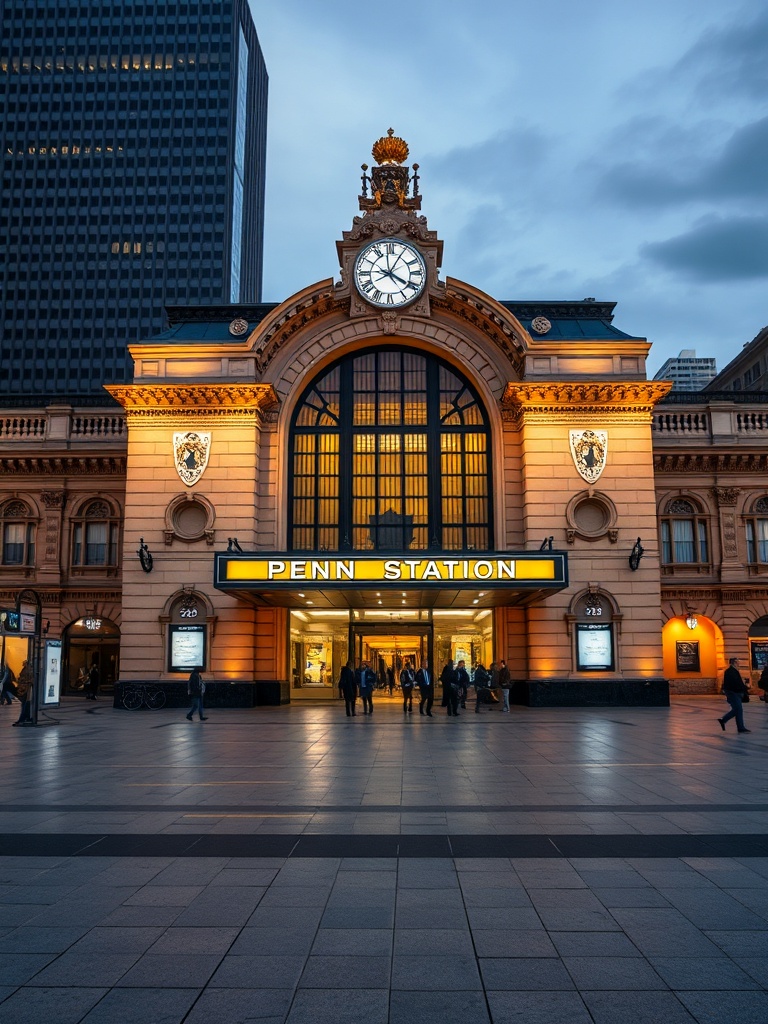Penn Station remains one of the busiest and most complex transportation hubs in the country, serving commuters, regional travelers, and visitors who need fast, reliable access across the metropolitan area. Whether arriving from New Jersey, Long Island, or an intercity route, understanding how the station is laid out and what to expect can make travel smoother.
Why Penn Station matters
Penn Station functions as the central rail hub linking regional commuter services, intercity rail, and multiple subway lines. Its heavy passenger flow and critical location near Midtown Manhattan make it a gateway for millions of trips. Because capacity constraints and ongoing upgrades shape daily operations, travelers should allow extra time during peak hours and special events.
Getting around the facility
The station has a dense layout with multiple entrances and concourses.
Key subway connections include the nearby 1/2/3 and A/C/E lines, plus a short walk to the B/D/F/M/N/Q/R/W lines at Herald Square. For those transferring between train operators, pay attention to signage and station maps: Amtrak, the Long Island Rail Road, and New Jersey Transit each use different concourses and boarding areas. Moynihan Train Hall, across the avenue in the historic post office building, provides a more spacious, light-filled departure area for some intercity services and expanded passenger amenities.
Practical tips for travelers
– Check your departure platform before you arrive and verify it again on station monitors; platforms can change during service adjustments.
– Arrive at least 20–30 minutes before scheduled departure for commuter routes and earlier for intercity trains, especially if you need to check luggage or buy tickets.
– Use official transit apps and operator alerts for real-time updates on delays, cancellations, and platform assignments.
– If mobility assistance or step-free access is required, plan ahead and notify the carrier; station elevators and accessible routes are improving but can be congested.
– Keep personal items close and allow extra time when carrying bags—crowds and tight passageways can slow movement.

Retail, comfort, and safety
Retail and food options have expanded with the addition of modern concourse spaces, offering more dining choices and conveniences.
Seating can be limited on crowded departures, so expect to stand during peak periods. Security presence and station staff are generally available to assist, and standard safety practices—staying aware of belongings, following announcements, and moving away from platform edges—help keep travel predictable.
Redevelopment and capacity
Long-term improvements and redevelopment efforts aim to add capacity, modernize facilities, and improve passenger flow.
Projects focus on creating clearer connections between concourses, expanding waiting areas, and enhancing accessibility. These efforts are gradually transforming the station into a more functional, passenger-friendly hub while also addressing the heavy demand that defines daily operations.
Making the most of your visit
Use clear landmarks—such as the main concourse entrances and Moynihan Train Hall—when arranging meetups. For trips that require quick transfers, identify the fastest walking routes between platforms and subway lines ahead of time. For tourists, factor in extra time to navigate crowds and follow signage to reach street-level exits efficiently.
Penn Station remains essential to regional mobility.
With continued improvements and careful planning by travelers, it can be navigated reliably even during the busiest travel periods.